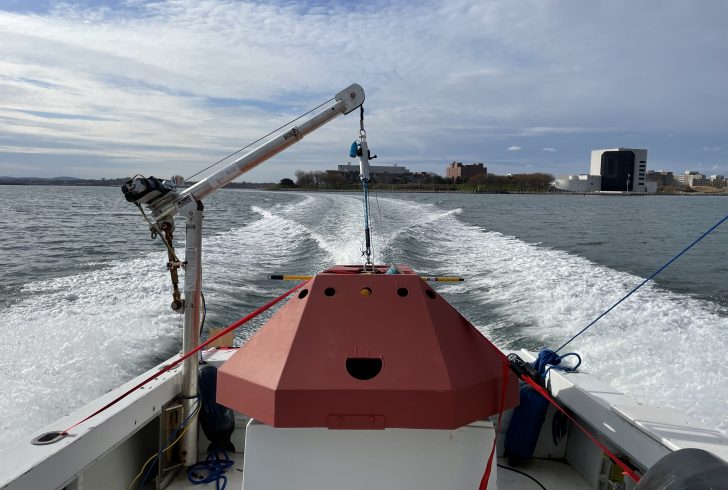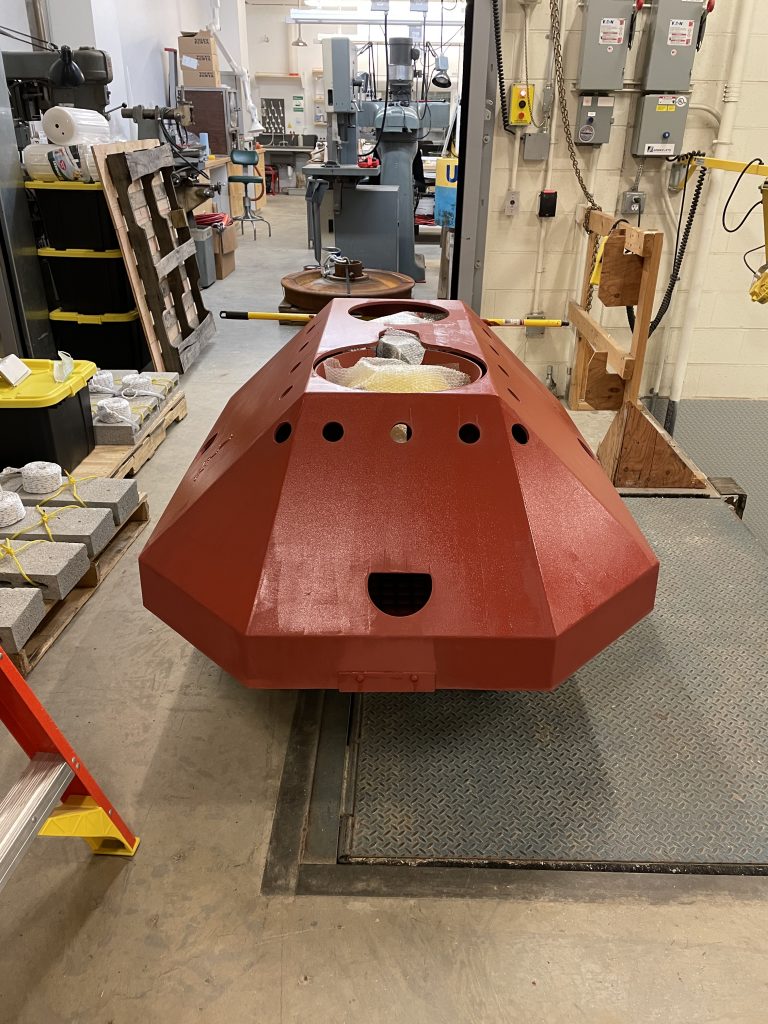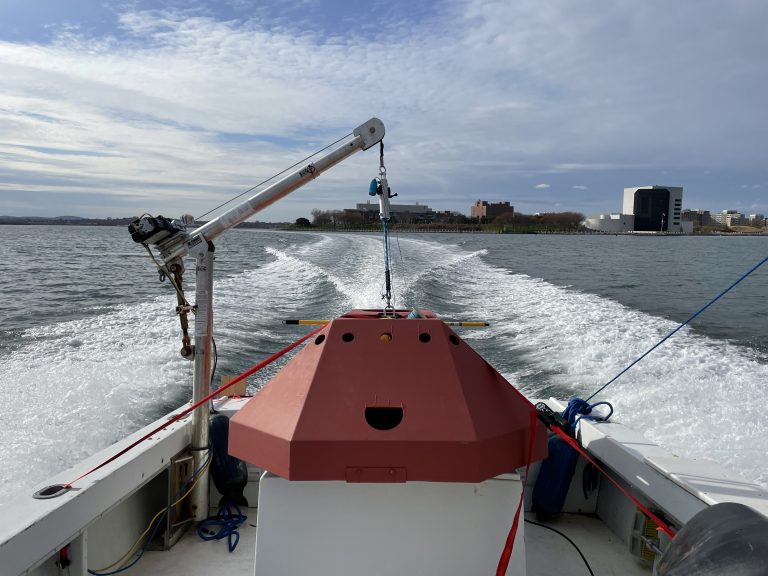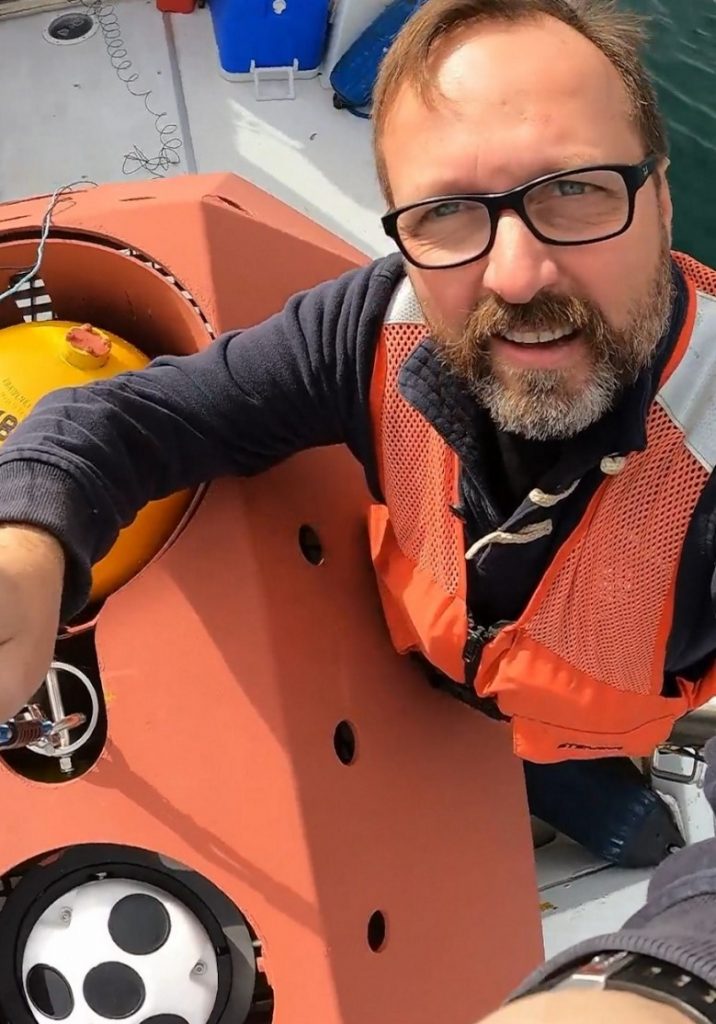Stone Living Lab Deploys New Monitoring Equipment around Boston Harbor


Recently, the Stone Living Lab deployed two Acoustic Doppler Current Profilers, or ADCPs, in the Boston Harbor area. These instruments will provide us with critical information about Boston Harbor and how winter storms affect its waters.

A large, red, metal box (the ADCP) sitting inside a workshop. Tools, boxes, and other scientific equipment are in the background.
The data gathered from these ADCPs will provide information about wave height, water level, and ocean currents at a specific location over time. This information will help scientists understand how to best design nature-based approaches for coastal resilience and to measure how they are working. In addition to this important baseline information, these data can also be used to create and adjust scientific models that show how water moves throughout Boston Harbor.
An ADCP uses sound waves to measure the speed and direction of currents in the water at different depths, from the seafloor to the ocean surface. To do this, an ADCP transmits “pings” of high frequency sound. As these sound waves move through the water, they bounce off of floating particles and are reflected back to the ADCP. Particles that are moving toward the ADCP will reflect sound waves with a higher frequency, while particles moving away from the ADCP will reflect sound waves with a lower frequency (this is called the Doppler effect). The difference between the frequency of the sound waves transmitted out into the water by the ADCP and the frequency of the sound waves when they return back is called the Doppler shift.
The ADCP also measures how long it takes its sound “pings” to travel out and be reflected back. The farther away a particle is from the ADCP, the longer it will take for the sound waves to bounce back. Using the difference in frequency and amount of time it takes for sound waves to return, scientists can calculate how fast and in what direction the particle and the water around it are moving.

The ADCP attached to a winch, sitting in the back of a research boat. The boat is driving through the ocean, and campus buildings of UMass Boston are in the background.
One ADCP was deployed outside Boston Harbor, approximately ½ mile north of Lovells Island. This instrument will be in the water for about 4 months. Data are being recorded internally by the instrument and will be downloaded at the end of the study period. This ADCP was deployed by three scientists from UMass Boston onboard the UMB Research Vessel, the R/V Neritic, using a 2,500-pound winch to lower the instrument into the water. The team surveyed the drop location with side-scan sonar and monitored the deployment using a live underwater video feed. Check out this video of the ADCP being lowered to the ocean floor!
A second ADCP was deployed by a team from Woods Hole Group off of Coughlin Park in Winthrop, MA as part of an ongoing, multi-year monitoring project. This ADCP will be in place for 3 months over the winter, which is often a time of bigger waves and strong storms. The scientists will use the ADCP to gather data about storm events and/or higher wave energy periods.
With these two high-tech instruments, the Lab is collecting exciting new data about the waves and currents of Boston Harbor. These data will help our researchers understand how water moves around the Harbor, how powerful winter storms change our Harbor, and help us design new Nature-based Solutions.

Research and Monitoring Committee member Francesco Peri standing next to the ADCP on the boat, looking into the camera.